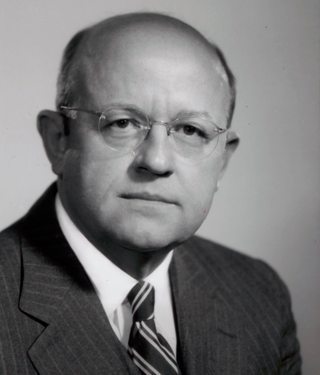It Happened Here: The Ruby Laser
The first use of a medical laser was to destroy a retinal tumor.
An early photograph produced by the ruby laser photocoagulator, used in retinal surgeries.
These days lasers are ubiquitous. Besides their regular application in the medical field, you can find them in scanners, DVD players, and even presentation pointers. But they weren’t always so widespread. In 1960, Theodore Maiman, an employee of the Hughes Research Lab in California, successfully constructed the world’s first working laser, made of synthetic ruby, a lasing medium. Then, everything changed. Maiman’s discovery immediately inspired a race to find uses for the laser, particularly in medicine.

Dr. Charles J. Campbell
Photo courtesy Archives & Special Collections, Health Sciences Library, Columbia University
The following year, the intense beam of light was put to its first medical use by Dr. Charles J. Campbell of the Edward S. Harkness Eye Institute, at what was then known as Columbia-Presbyterian Medical Center (now NewYork-Presbyterian/Columbia University Medical Center). On November 22, 1961, while working alongside Dr. Charles Koester, a representative of American Optical Co., which had supplied the laser, Campbell utilized the device to treat a patient’s retinal tumor. The tumor, an angioma, was destroyed with a single pulse that lasted about one thousandth of a second. Besides being incredibly fast, the laser was far more comfortable for the patient than the 1,000-watt xenon arc lamps that were being used in similar operations. In the years to come, the ruby laser was used in various medical treatments. In addition to its continued application in ophthalmology, including LASIK, it’s also commonly employed to treat cancer and conduct surgeries in the fields of gynecology, dermatology, and gastroenterology.
